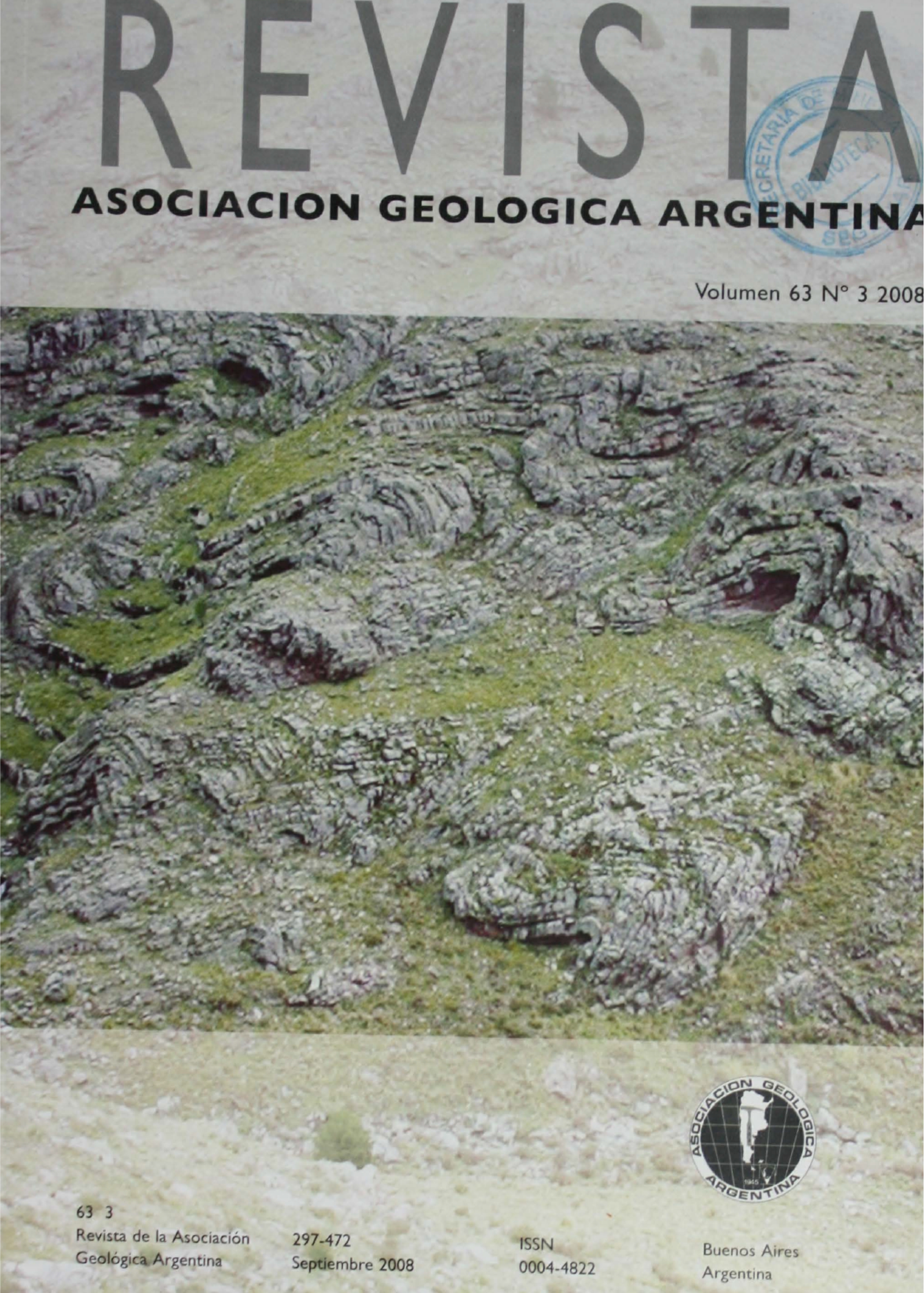The Calasuya Granite: a postcollisional alkalifeldspar intrusive in the Sierra Norte-Ambargasta batholith, Córdoba province
Main Article Content
Abstract
The central-western portion of the extended Sierra Norte-Ambargasta batholith, in the easternmost block of the eastern Sierras Pampeanas, is largely characterized by pre-collisional I-type magmatic arc granitoids (granodiorites, monzogranites, dacite and rhyolite porphyries named La Isla - Cerro de los Burros series), and by smaller sized postcollisional felsic intrusives of higher evolved chemistry (named Puesto de los Caminos and Cerro Baritina units), all of which crystallized along the Late Proterozoic -Lower Cambrian time span. New geological and geochemical data from the central and oriental areas of the batholith allowed to identify an intrusive body of alkalifeldspar composition (the Calasuya granite), the first of its type in the batholith. Its distinctive mineralogy is highlighted by the albitic composition of magmatic plagioclase (molar An < 6 %), the high #Fe (0.97) of accessory biotite, the presence of accessory late magmatic fluorite, and the conspicuous postmagmatic albitization process. Its highly fractionated nature is shown by high SiO2 and low CaO, MgO, TiO2, MnO and Fe2O3(t) contents, also evidenced by Rb, Y and Th enrichment, and Sr, Ba and Zr depletion. The total REE content is low, showing asymmetric spider-type diagrams with predominance of LREE over HREE; positive Ce/Ce* anomalies as well as deep negative Eu/Eu* are also remarkable characteristics of this pluton. The Zr+Nb+Ce+Y versus Ga/Al ratio unequivocally displays its I-type highly fractionated signature. According to some field and geochemical patterns, the Calasuya granite gathers similarities with granites of the Puesto de los Caminos unit, which groups highly evolved postcollisional epizonal granitoids. Notwithstanding, despite these evidences, REE patterns and its accessory mineralogy reveal more affinity with the Cerro Baritina unit which is represented by Lower Cambrian syenogranitic aplites, interpreted together with other highly evolved granitoids as indicators of the Pampean orogeny closure.
Article Details

This work is licensed under a Creative Commons Attribution-NonCommercial 4.0 International License.
Nota de copyright
Los autores conservan los derechos de autor y garantizan a la revista el derecho de ser la primera publicación del trabajo licenciado según una licencia de atribución Creative Commons que permite a otros compartir el trabajo con el reconocimiento de la autoría y de la publicación en la que se publicó por primera vez.
Declaración de privacidad
Los nombres y direcciones de correo electrónico introducidos en esta revista se usarán exclusivamente para los fines declarados por esta revista y no estarán disponibles para ningún otro propósito u otra persona.

